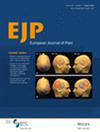The Effect of a Single Session Rubber Hand Illusion on Pressure Pain Is Not Long-Lasting
Abstract
Background
Rubber hand illusion (RHI) is an experience that causes changes in body perception and awareness as a result of the integration of simultaneous perceived visual and tactile stimuli. After synchronous brush strokes with rubber and real hands, the person perceives the rubber hand as their own. RHI is known to alter pain perception. In this study, it was aimed to evaluate the effects of RHI on pressure pain threshold and continuity of this effect.
Methods
Twenty-three volunteers who developed RHI were included in our study and two conditions, illusion (synchronous) and control (asynchronous), were applied. The illusion condition was created by synchronous brush strokes, while the control condition was created by asynchronous brush application using different frequency and different finger areas in the same individuals. In both conditions, pressure pain threshold measurements with an algometer were performed at four times: baseline/1st measurement, during the brush stroke/2nd measurement, at the end of the brush stroke/3rd measurement and after the hand was removed from the environment/4th measurement.
Results
It was shown that RHI increased the pressure-pain threshold (p = 0.004) in healthy volunteers. Asynchronous brush strokes arranged as a control trial significantly decreased the pressure pain threshold (p = 0.002).
Conclusions
It was found that the threshold values that change during the brush strokes return to the initial state after the brush strokes are terminated and the rubber hand is removed from the environment so that the effect of the illusion does not last for a long time with a single session application.

 求助内容:
求助内容: 应助结果提醒方式:
应助结果提醒方式:


